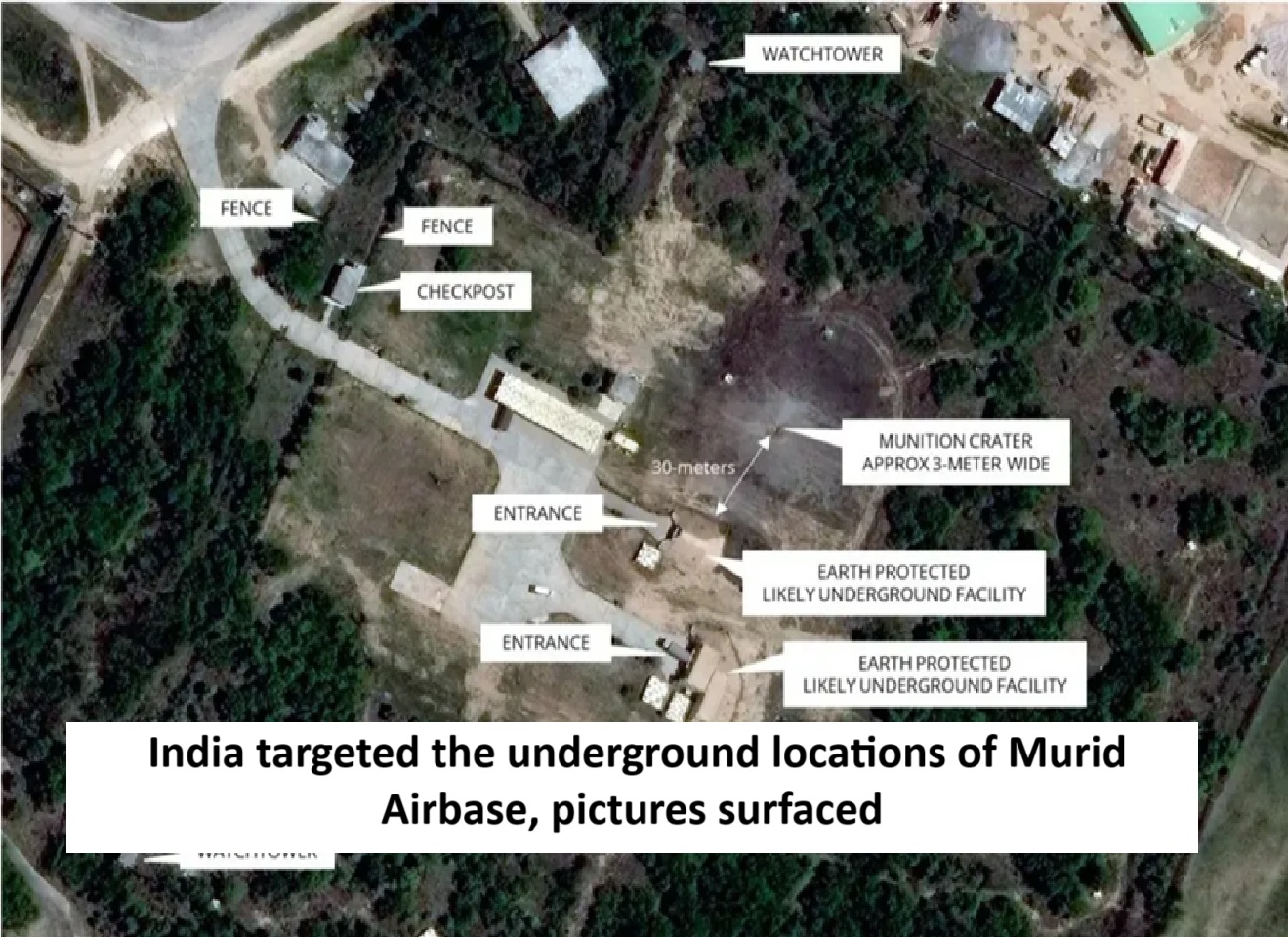
News Topical, Digital Desk : Indian delegations are travelling to countries across the world to discuss Operation Sindoor and expose Pakistan's stance on terrorism. Meanwhile, recently released high-resolution satellite images have revealed that a suspected underground facility was targeted in the air strikes carried out during Operation Sindoor on Pakistan's Murid Air Base. High-resolution satellite images released on Wednesday showed that Pakistan's Murid Air Base has suffered heavy damage, including a three-metre-wide crater just 30 metres from the Pakistan Air Force's underground facility and damage to the roof of a structure adjacent to an unmanned aerial vehicle hangar.
New satellite images surfaced
Satellite images taken by Maxar Technologies show a crater about 3 meters wide just 30 meters from the entrance to a heavily fortified sub-complex within the Murid Air Base. The area is protected by double fencing, watchtowers and stringent security protocols. According to Damien Simon, geo-intelligence researcher at Intel Lab, the site where the crater is shown is believed to be an underground structure. Hence, there is speculation that India's aim was to attack deeply buried targets, possibly linked to command and control functions or drone operations.
Nurkhan airbase completely destroyed
Simon said the airbase's roof showed clear signs of impact, as well as signs of internal damage, indicating a direct strike. Meanwhile, Maxar images of Noor Khan Air Base, hit during Operation Sindoor, showed much worse damage than initially estimated. 6 Satellite images showed that a building complex pegged as Bhaat's primary target was demolished. "Initial observations on May 10 indicated the destruction of special-use trucks. But new images show that Noor Khan Air Base has been destroyed," Simon said.
Read More: Meteorological Department issued 'Orange Alert' for Delhi, thunderstorm and rain predicted
--Advertisement--

 Share
Share



